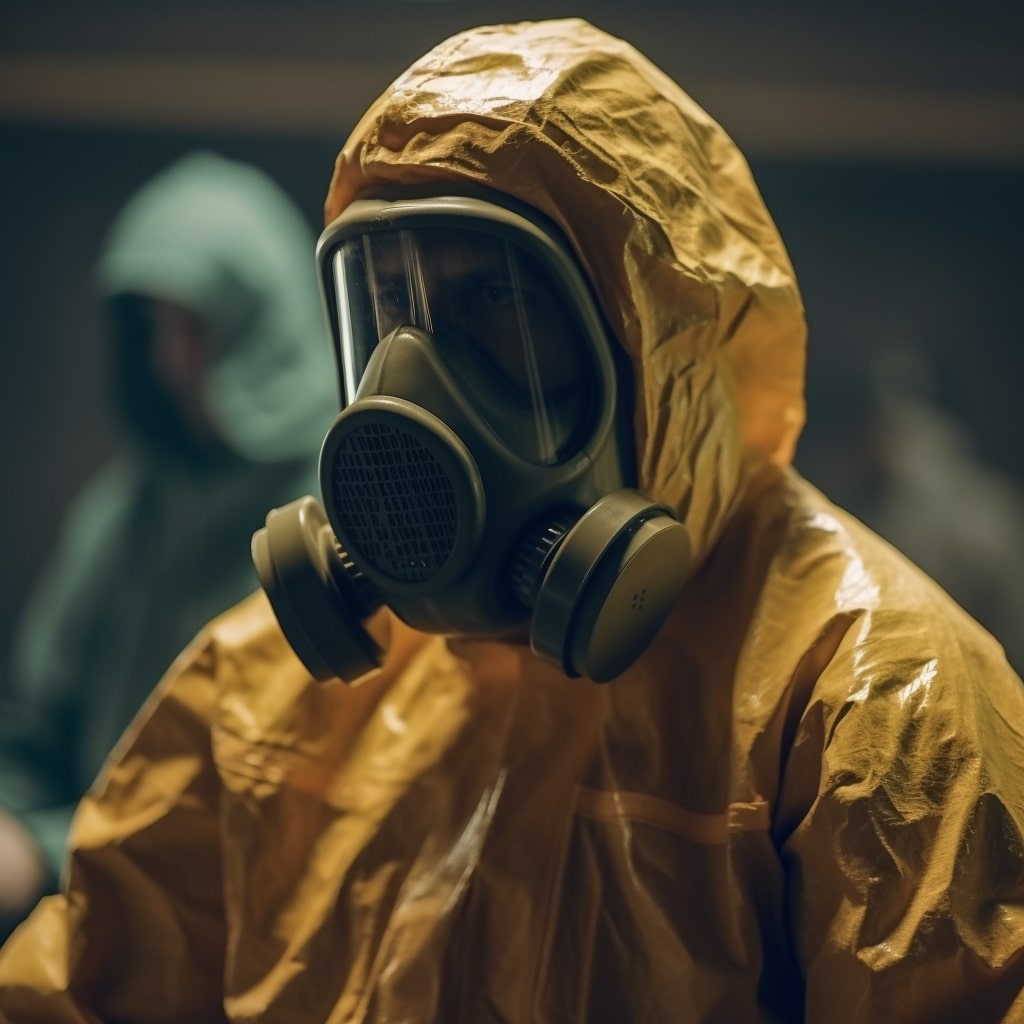In today’s increasingly hazardous world, understanding the distinctions between hazardous materials (hazmat) and biohazards is crucial for ensuring safety.
Hazmat refers to substances that pose risks to health, property, and the environment, such as toxic chemicals and nuclear waste.
On the other hand, biohazards are biological or chemical substances that are dangerous to humans, animals, and the environment, including bodily fluids and infectious materials.
Hiring professional biohazard cleanup companies is essential for the proper handling and disposal of these materials, mitigating the risks they pose.
Definition of Hazmat and Biohazard
The current discussion topic revolves around the definition of hazmat and biohazard, exploring the distinctions and potential risks associated with each.
Hazmat refers to substances that pose a reasonable risk to health, property, or the environment, such as toxic chemicals and nuclear waste products. On the other hand, biohazards are biological or chemical substances dangerous to humans, animals, or the environment, including bodily fluids and sharp objects.
Understanding these differences is crucial for ensuring safety and protection, considering the environmental impact and human health. Proper handling and cleanup are of utmost importance in managing hazmat and biohazard materials.
Main Differences Between Hazmat and Biohazard
Examining the main differences between hazmat and biohazard illuminates the contrasting ways in which these hazardous materials pose risks and necessitate distinct handling protocols.
Hazmat disposal involves following specific procedures and regulations for transportation and storage, ensuring proper containment, and preventing environmental harm.
Biohazard cleanup procedures, on the other hand, focus on training individuals to handle infectious materials safely and prevent the spread of pathogens.
Understanding these differences is crucial for implementing effective safety measures in handling hazardous materials.
Harm to Environment Vs. Threat to Human Health
Considering the potential harm to the environment and the threat to human health, it is essential to prioritize the safe handling and disposal of hazardous materials.
- Environmental impact: Improper disposal of hazmat and biohazardous materials can contaminate soil, water, and air, leading to long-term environmental damage.
- Health risks: Exposure to hazardous materials can cause acute or chronic health issues, ranging from respiratory problems to cancer.
- Safety regulations: Strict regulations and guidelines are in place to ensure proper handling, storage, and disposal of hazardous materials.
- Disposal methods: Hazardous materials must be disposed of in accordance with specific protocols to minimize environmental and health risks.
- Protective equipment: Proper personal protective equipment (PPE) is crucial when handling hazardous materials to prevent exposure and minimize risks to health and safety.
Examples of Hazmat Substances
Proper handling and disposal protocols are crucial in minimizing the risks associated with the transportation and storage of hazardous substances such as explosives and flammable liquids.
Hazmat disposal requires strict adherence to regulations and guidelines to ensure safety.
Similarly, biohazard cleanup and waste management demand specialized procedures and equipment to prevent the spread of infectious materials.
Professional companies trained in hazmat transportation, storage, and biohazard cleanup play a vital role in maintaining public safety and protecting the environment.
Examples of Biohazardous Materials
Importantly, biohazardous materials such as bodily fluids and blood pose a significant threat to human health and safety if not handled and disposed of properly. The proper disposal of biohazard waste is crucial to prevent the spread of infectious materials.
Hazmat disposal requires specific training and knowledge to handle and dispose of hazardous substances safely. Hazmat training is essential to ensure compliance with regulations and guidelines.
Proper handling and disposal of biohazardous materials are vital to protect both individuals and the environment.
Controlled Labs Vs. Larger-Scale Environments
Controlled labs and larger-scale environments require different protocols and strategies to ensure the safe handling and containment of hazardous materials.
In controlled labs, workplace safety measures focus on preventing exposure to biohazards and ensuring proper disposal. Health hazards are primarily associated with biohazardous materials, such as bodily fluids, which require specialized handling and decontamination procedures.
In larger-scale environments, the emphasis is on preventing contamination and properly managing hazmat substances, such as toxic chemicals and fuels. Both settings prioritize the protection of human health and the environment.
Importance of Professional Biohazard Cleanup Companies
Due to the potential health risks associated with mishandling biohazardous materials, it is imperative that professional biohazard cleanup companies be hired in order to ensure the safe and proper disposal of these substances.
- Biohazard cleanup process
- Biohazard disposal methods
- Hazmat safety precautions
- Hazmat storage guidelines
- Biohazard training requirements
Professional biohazard cleanup companies have the knowledge, skills, and proper equipment to handle biohazardous materials safely. They follow regulations and protocols for proper disposal, ensuring the protection of both human health and the environment.
The Role of Laws and Regulations in Handling Hazardous Materials
Compliance with laws and regulations is essential for ensuring the safe and responsible handling of hazardous materials. Safety protocols and handling procedures must be followed to prevent accidents, protect human health, and minimize environmental impact.
Failure to comply with these requirements can have severe legal implications. It is crucial for individuals and organizations to be aware of the specific regulations and guidelines governing the handling of hazardous materials to avoid penalties and ensure the overall safety of their operations.
Conclusion
In conclusion, understanding the distinctions between hazmat and biohazard is crucial for ensuring the safety of individuals and the environment.
While hazmat primarily harms the environment, biohazards pose a direct threat to human health and safety.
Hiring professional biohazard cleanup companies is essential in handling biohazardous materials with sensitivity and ensuring their proper disposal.
By following established laws, regulations, and protocols, these companies play a vital role in mitigating the risks associated with hazmat and biohazards.

